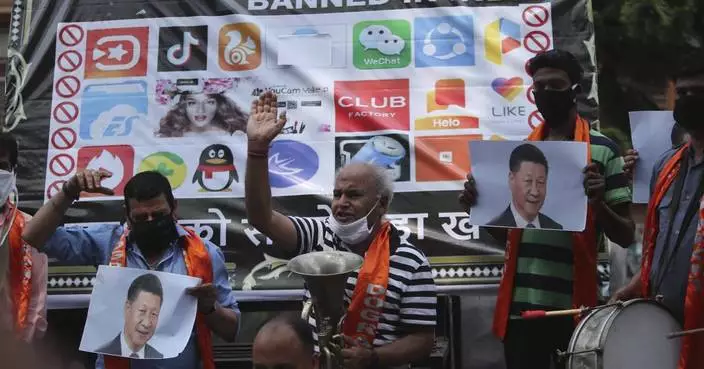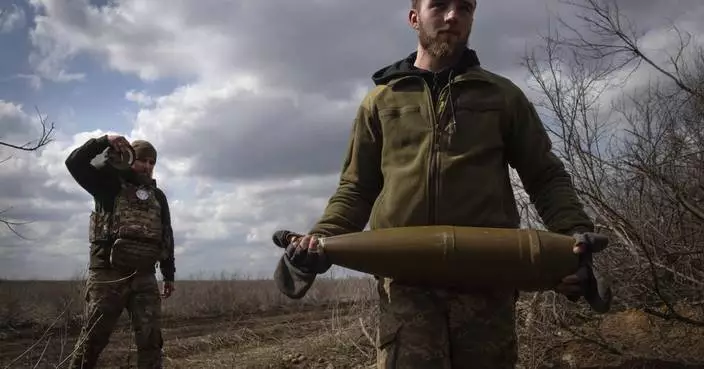Chief Justice John Roberts on Tuesday stressed the need for the judicial branch to remain independent, taking note of the tumultuous debate over the confirmation of Associate Justice Brett Kavanaugh to say that the high court makes mistakes when it yields to political pressures.
In a speech at the University of Minnesota, Roberts said he wasn't there to criticize Congress or the executive branch. "We do that often enough in our opinions," he said. But he said he wanted to stress how the judicial branch "must be very different" from the "political branches" elected by the people.
The courts "do not speak for the people," he said. "But we speak for the Constitution. Our role is very clear: We are to interpret the Constitution and laws of the United States and ensure that the political branches act within them."
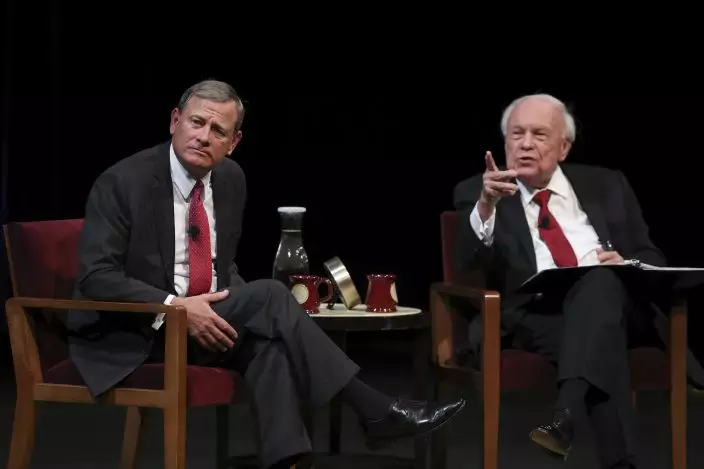
U.S. Supreme Court Chief Justice John Roberts, Jr., left, listen to a student's question following his conversation with Professor Robert A. Stein Tuesday, Oct. 16, 2018 at Northrop Auditorium in Minneapolis. Roberts stressed the need for the judicial branch to remain independent, taking note of the tumultuous debate over the confirmation of Associate Justice Brett Kavanaugh to say that the high court makes mistakes when it yields to political pressures. (Jeff WheelerStar Tribune via AP)
Roberts cited some landmark decisions that he said the Supreme Court would have decided differently if the justices had bowed to political pressure, including the Brown v. Board of Education decision against school segregation.
"The court has, from time to time, erred and erred greatly. But when it has, it has been because the court yielded to political pressure," he said, citing what he called the "shameful" case during World War II that upheld the internment of Japanese-American citizens.
Roberts also stressed the value of the court's tradition of collegiality. Before the justices go onto the bench to hear a case, and before they walk into the conference room to discuss it, he said they always pause for a moment to shake hands with each other.
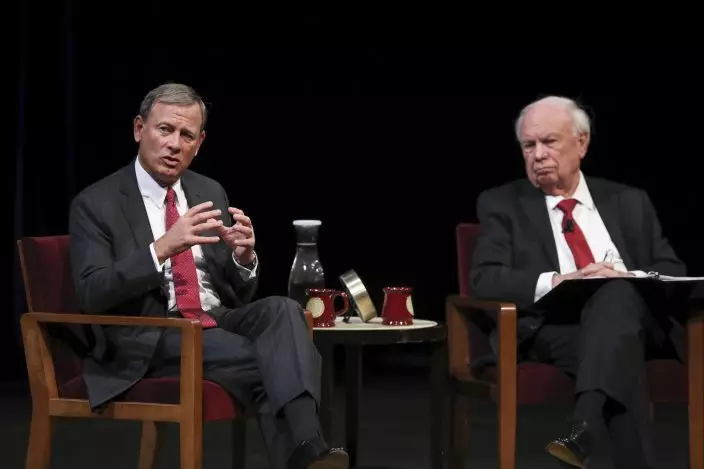
U.S. Supreme Court Chief Justice John Roberts, Jr., left, answers a student's question following his conversation with Professor Robert A. Stein Tuesday, Oct. 16, 2018 at Northrop Auditorium in Minneapolis. Roberts stressed the need for the judicial branch to remain independent, taking note of the tumultuous debate over the confirmation of Associate Justice Brett Kavanaugh to say that the high court makes mistakes when it yields to political pressures. (Jeff WheelerStar Tribune via AP)
Quoting from Kavanaugh's remarks during his ceremonial swearing in at the White House, Roberts called the tradition "a repeated reminder that, as our newest colleague put it, we do not sit on opposite sides an aisle, we do not caucus in separate rooms, we do not serve one party or one interest, we serve one nation. And I want to assure all of you that we will continue to do that, to the best of our abilities, whether times are calm or contentious."
Kavanaugh gives the court a 5-4 conservative working majority but the confirmation fight raised public concerns about the court's ability to rise above partisanship. President Donald Trump picked Kavanaugh to replace the retiring Anthony Kennedy, a key swing vote. Court watchers say Roberts, who was appointed chief justice by President George W. Bush in 2005, may now come closest to representing its center , even though he's more conservative than Kennedy was.
Roberts has expressed concern in previous speeches about the court being portrayed as a partisan political institution. And other justices have expressed concerns in recent weeks about public perceptions of the integrity of the court, as well as the need to preserve collegiality.

U.S. Supreme Court Chief Justice John Roberts, Jr., left, answers a student's question following his conversation with Professor Robert A. Stein Tuesday, Oct. 16, 2018 at Northrop Auditorium in Minneapolis. Roberts stressed the need for the judicial branch to remain independent, taking note of the tumultuous debate over the confirmation of Associate Justice Brett Kavanaugh to say that the high court makes mistakes when it yields to political pressures. (Jeff WheelerStar Tribune via AP)
"Every single one of us needs to realize how precious the court's legitimacy is. You know we don't have an army. We don't have any money. The only way we can get people to do what we think they should do is because people respect us," Justice Elena Kagan said at Princeton University earlier this month.
Speaking at the same event, Justice Sonia Sotomayor said the nine justices "have to rise above partisanship in our personal relationships. We have to treat each with respect and dignity and a sense of amicability that the rest of the world doesn't always share."
Roberts appeared as part of a lecture series named for former University of Minnesota Law School dean Robert Stein. Previous lecturers in the series have included Supreme Court justices Sotomayor, Ruth Bader Ginsburg and Antonin Scalia.
KYIV, Ukraine (AP) — A big, new package of U.S. military aid will help Ukraine avoid defeat in its war with Russia. Winning will still be a long slog.
The arms and ammunition in the $61 billion military aid package should enable Ukraine to slow the Russian army's bloody advances and block its strikes on troops and civilians. And it will buy Ukraine time — for long-term planning about how to take back the fifth of the country now under Russian control.
“Ultimately it offers Ukraine the prospect of staying in the war this year,” said Michael Clarke, visiting professor in war studies at King’s College London. “Sometimes in warfare you’ve just got to stay in it. You’ve just got to avoid being rolled over.”
The U.S. House of Representatives approved the package on Saturday after months of delays by some Republicans wary of U.S. involvement overseas. It was passed by the Senate on Tuesday, and President Joe Biden said he would sign it Wednesday.
The difference could be felt within days on the front line in eastern and southern Ukraine, where Russia’s much larger army has been slowly taking territory against massively outgunned Ukrainian forces.
The aid approval means Ukraine may be able to release artillery ammunition from dwindling stocks that it has been rationing. More equipment will come soon from American stocks in Poland and Germany, and later from the U.S.
The first shipments are expected to arrive by the beginning of next week, said Davyd Arakhamia, a lawmaker with Ukrainian President Volodymyr Zelenskyy’s Servant of the People party.
But opposition lawmaker Vadym Ivchenko, a member of the Ukrainian parliament’s National Security, Defense and Intelligence Committee, said logistical challenges and bureaucracy could delay shipments to Ukraine by two to three months, and it would be even longer before they reach the front line.
While details of the shipments are classified, Ukraine’s most urgent needs are artillery shells to stop Russian troops from advancing, and anti-aircraft missiles to protect people and infrastructure from missiles, drones and bombs.
What’s coming first is not always what front-line commanders need most, said Arakhamia, the Ukrainian lawmaker. He said that even a military giant like the U.S. does not have stockpiles of everything.
“The logic behind this first package was, you (the U.S.) finds our top priorities and then you see what you have in the warehouses,” Arakhamia said. “And sometimes they do not match.”
Hope for future breakthroughs for Ukraine still hangs on more timely deliveries of Western aid, lawmakers acknowledge.
Many experts believe that both Ukraine and Russia are exhausted by two years of war and won’t be able to mount a major offensive — one capable of making big strategic gains — until next year.
Still, Russia is pushing forward at several points along the 1,000-kilometer (600-mile) front, using tanks, wave after wave of infantry troops and satellite-guided gliding bombs to pummel Ukrainian forces. Russia is also hitting power plants and pounding Ukraine’s second-largest city, Kharkiv, which is only about 30 kilometers (some 20 miles) from the Russian border.
Ivchenko said the goal for Ukraine’s forces now is to “hold the line” until the bulk of new supplies arrive by mid-summer. Then, they can focus on trying to recapture territory recently lost in the Donetsk region.
“And probably ... at the end of summer we’ll see some movement, offensive movement of the Ukrainian armed forces,” he said.
Some military experts doubt Ukraine has the resources to mount even small offensives very soon.
The U.S. funding “can probably only help stabilize the Ukrainian position for this year and begin preparations for operations in 2025,” said Matthew Savill, director of military sciences at the Royal United Services Institute, a think tank.
In the best-case scenario for Ukraine, the American aid will give commanders time to reorganize and train its army — applying lessons learned from its failed summer 2023 offensive. It may also galvanize Ukraine’s allies in Europe to increase aid.
“So this just wasn’t about Ukraine and the United States, this really affected our entire 51-country coalition,” said U.S. Congressman Bill Keating, a Democrat who visited Kyiv on Monday as part of a four-member congressional delegation.
Zelenskyy insists Ukraine's war aim is to recapture all its territory from Russia — including Crimea, seized illegally in 2014. Even if the war ultimately ends through negotiation, as many experts believe, Ukraine wants to do that from as strong a position as possible.
Whatever happens on the battlefield, Ukraine still faces variables beyond its control.
Former U.S. President Donald Trump, who seeks to retake the White House in the November election, has said he would end the war within days of taking office. And the 27-nation Europe Union includes leaders like Hungarian Prime Minister Viktor Orbán and Slovak Prime Minister Robert Fico, who have opposed arming Ukraine.
Ukraine’s allies have held back from supplying some arms out of concern about escalation or depleting their own stocks. Ukraine says that to win the war it needs longer-range missiles it could use for potentially game-changing operations such as cutting off occupied Crimea, where's Russia's Black Sea fleet is based.
It wants Army Tactical Missile Systems, known as ATACMs, from the U.S. and Taurus cruise missiles from Germany. Both governments have resisted calls to send them because they are capable of striking targets deep within Russian territory.
The new bill authorizes the president to send Ukraine ATACMS “as soon as practicable.” It's unclear what that will mean in practice.
Sometimes, promised weapons have arrived late, or not at all. Zelenskyy recently pointed out that Ukraine is still waiting for the F-16 fighter jets it was promised a year ago.
Meanwhile, Russia is using its advantage in troops and weapons to push back Ukrainian forces, perhaps seeking to make maximum gains before Ukraine's new supplies arrive.
For weeks it has pummeled the small eastern city of Chasiv Yar, at the cost of 900 soldiers killed and wounded a day, according to the U.K. Ministry of Defense.
Capturing the strategically important hill town would allow them to move toward Sloviansk and Kramatorsk, key cities Ukraine controls in the eastern region of Donetsk. It would be a significant win for Russian President Vladimir Putin, who Western officials say is bent on toppling Ukraine’s pro-Western government.
Russian pressure was aimed not just at gaining territory, but on undermining Zelenskyy and bolstering critics who say his war plan is failing, said Clarke of King's College London.
The U.S. aid package decreases the likelihood of a political crisis in Ukraine, and U.S. Speaker Mike Johnson deserves credit for pushing it through Congress, he said.
"He held history in his hands,” Clarke said.
Follow AP’s coverage of the war in Ukraine at https://apnews.com/hub/russia-ukraine
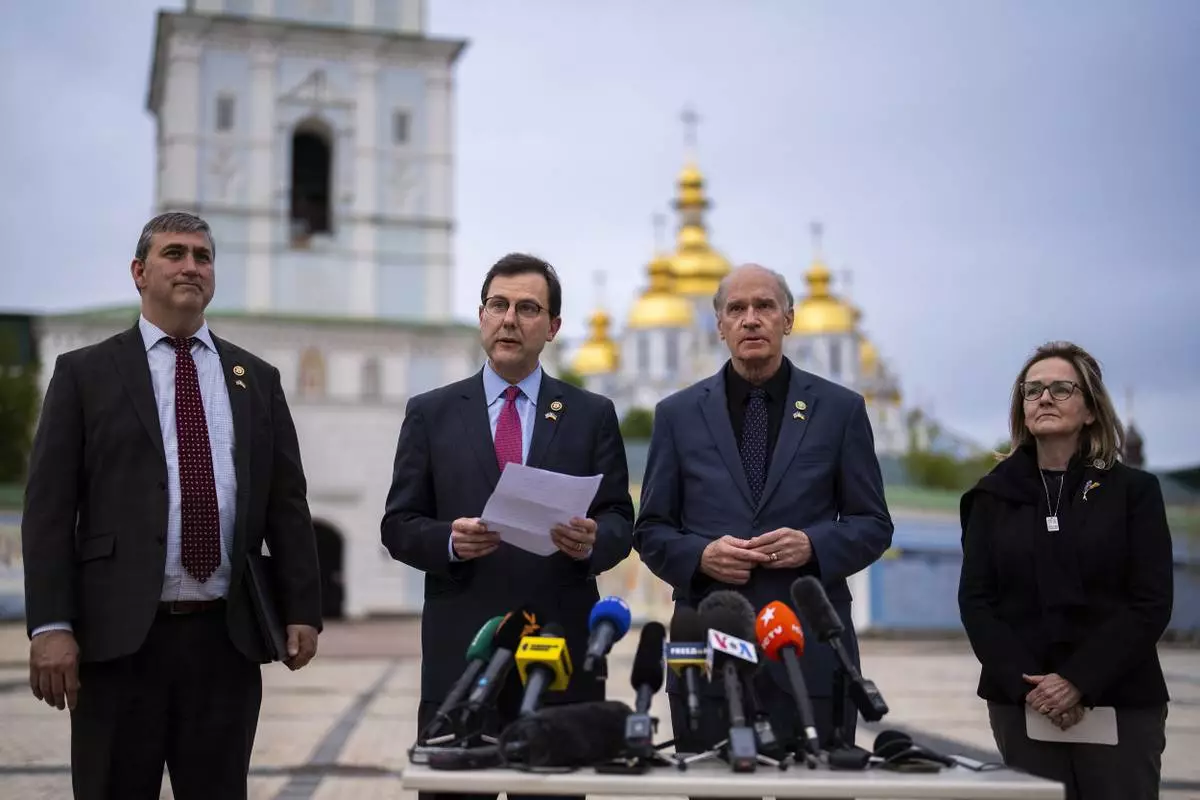
From left, U.S. representatives Nathaniel Moran, R-Tx, Tom Kean Jr, R-NJ, Bill Keating, D-Mass, and Madeleine Deane, D-Pa, talk to journalists during a joint news conference outside Saint Michael cathedral in Kyiv, Ukraine, Monday, April 22, 2024. A newly approved package of $61 billion in U.S. aid may prevent Ukraine from losing its war against Russia. But winning it will be a long slog. (AP Photo/Francisco Seco)
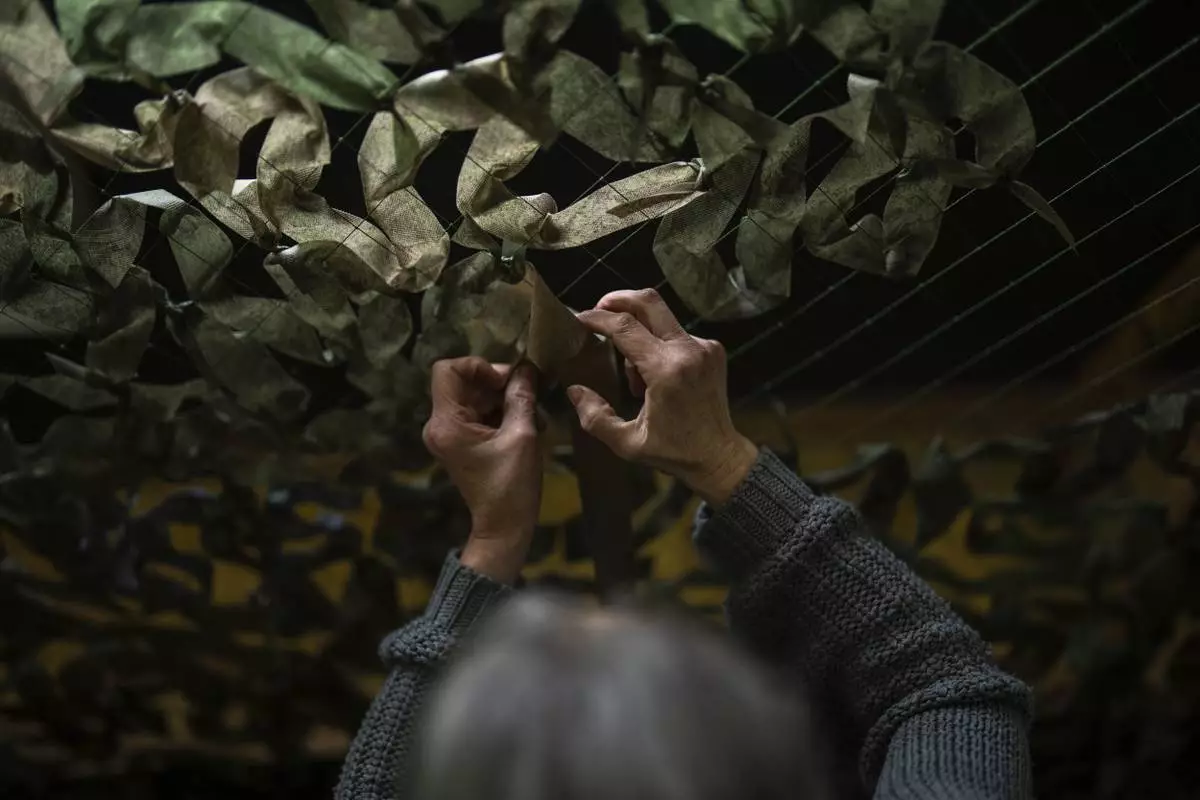
A volunteer makes a camouflage net at a facility producing material for Ukrainian soldiers in Kyiv, Ukraine, Monday, April 22, 2024. A newly approved package of $61 billion in U.S. aid may prevent Ukraine from losing its war against Russia. But winning it will be a long slog. (AP Photo/Francisco Seco)
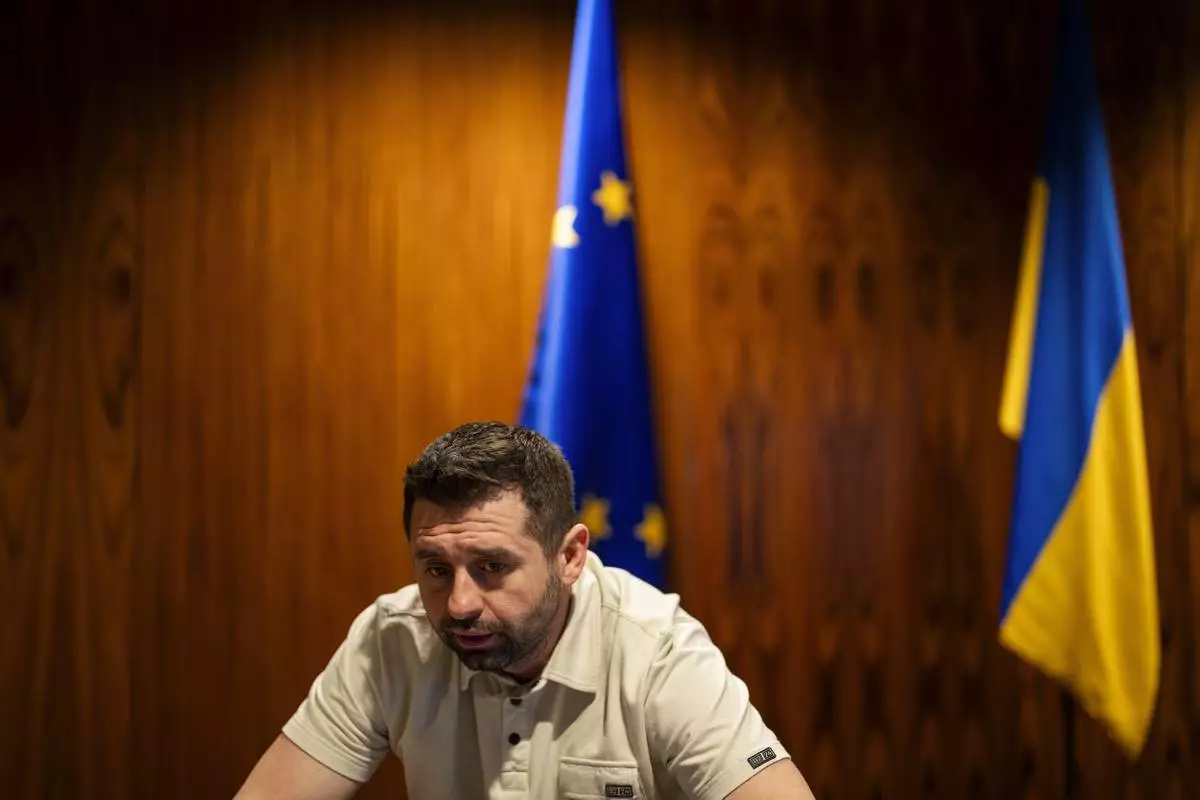
Davyd Arakhamia, a lawmaker with Ukrainian President Volodymyr Zelenskyy's Servant of the People party, talks during an interview with Associated Press in Kyiv, Ukraine, Monday, April 22, 2024. (AP Photo/Francisco Seco)
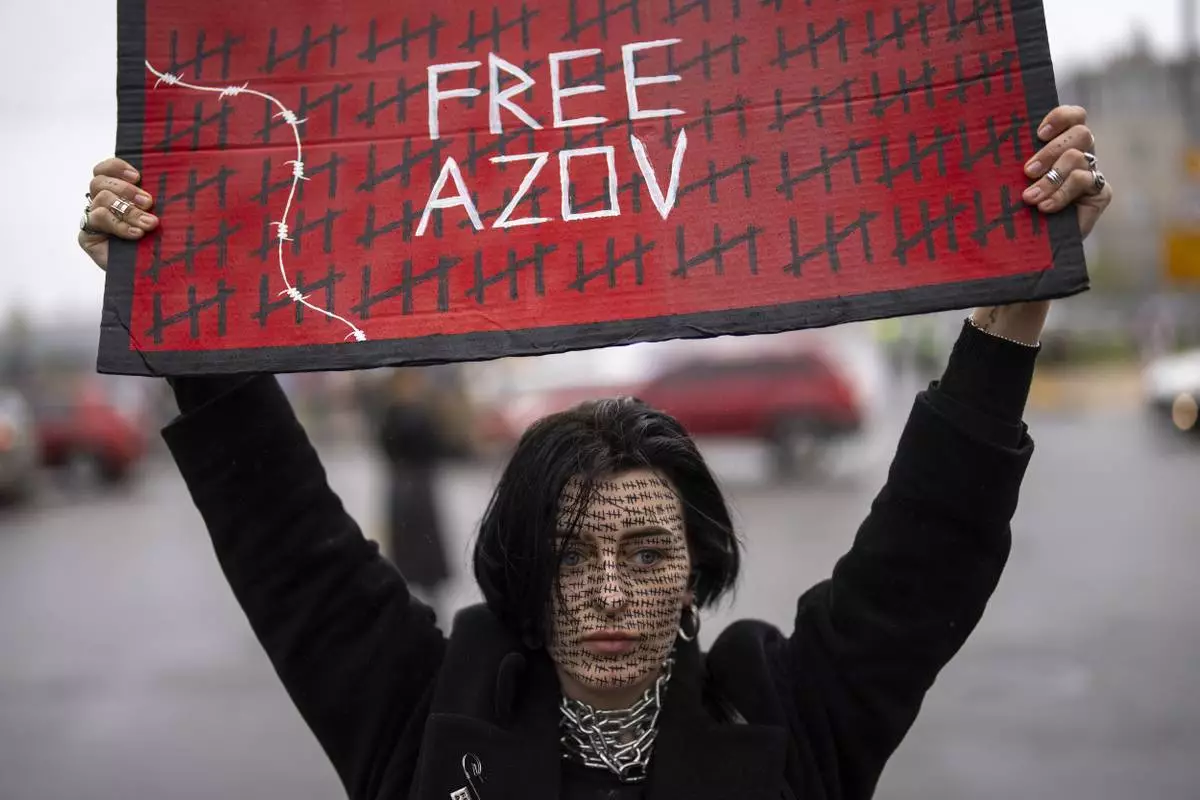
A woman rallies to raise awareness on the fate of Ukrainian prisoners of war in Kyiv, Ukraine, Sunday, April 21, 2024. (AP Photo/Francisco Seco)
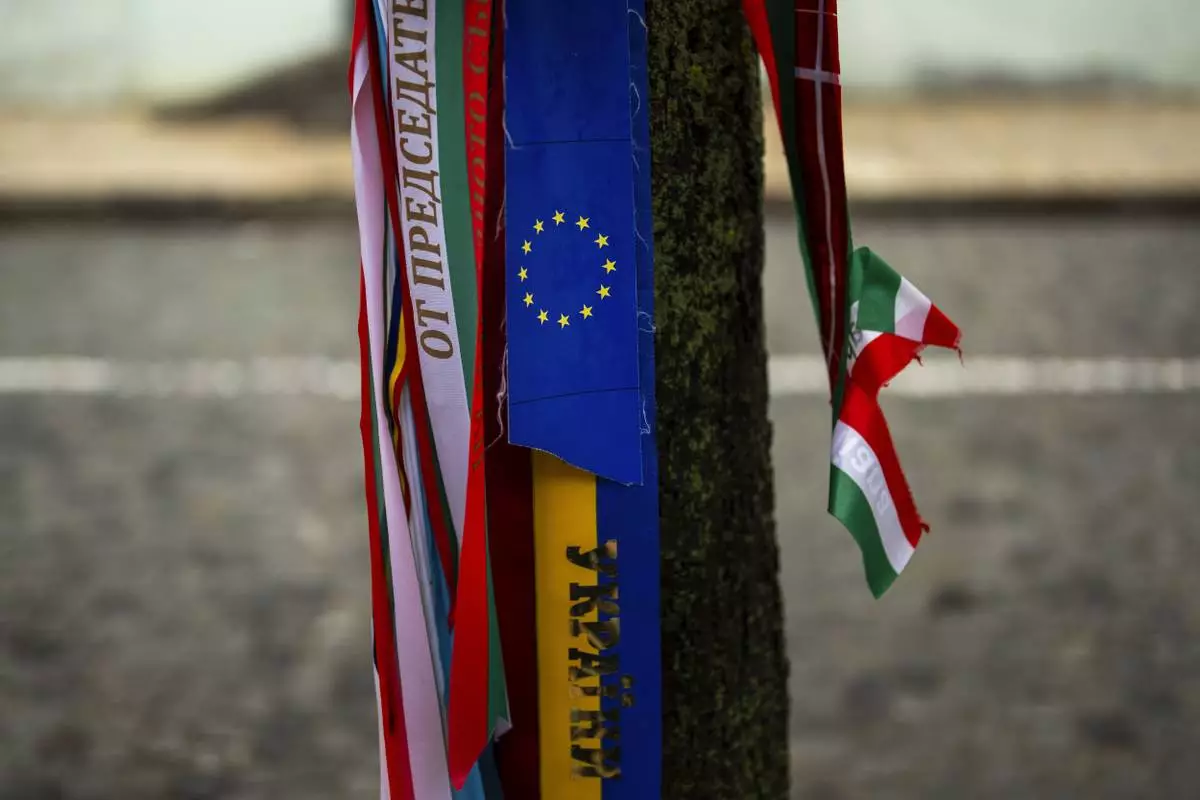
Ribbons with the colors of the European Union and Ukraine are attached to a tree next to memorial wall of Ukrainian soldiers killed during the war in Kyiv, Ukraine, Monday, April 22, 2024. (AP Photo/Francisco Seco)
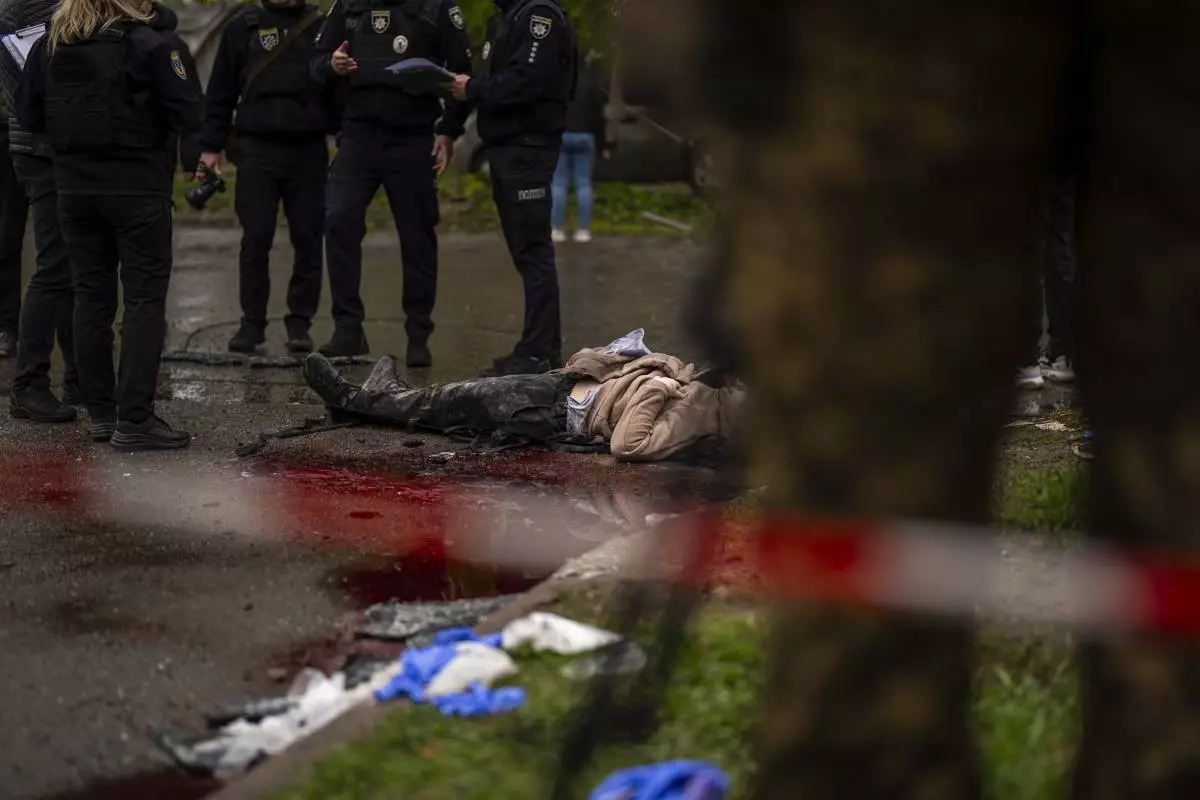
The body of a woman killed by Russian bombardment in Chernihiv, Ukraine, Wednesday, April 17, 2024. (AP Photo/Francisco Seco)

Soldiers carry the coffins of two Ukrainian army sergeants during their funeral in Lviv, Ukraine, Tuesday, April 16, 2024. (AP Photo/Francisco Seco)













